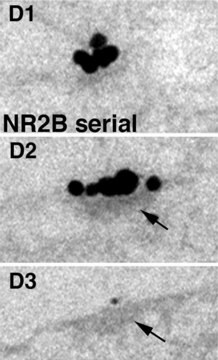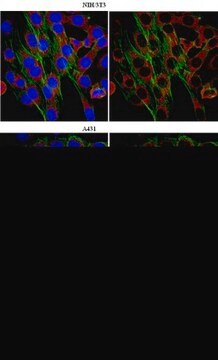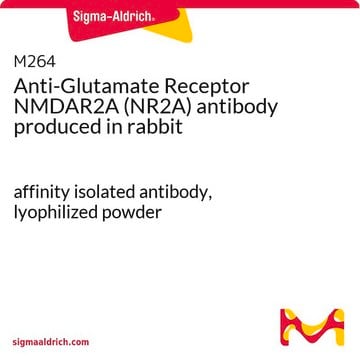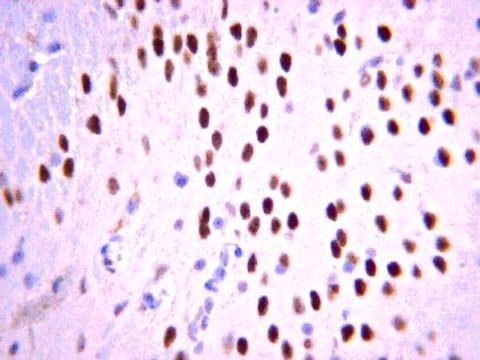MAB5216
Anti-NMDAR2A Antibody
Chemicon®, from mouse
Sinônimo(s):
NR2A
About This Item
Produtos recomendados
fonte biológica
mouse
Nível de qualidade
forma do anticorpo
affinity purified immunoglobulin
clone
monoclonal
reatividade de espécies
human
fabricante/nome comercial
Chemicon®
técnica(s)
immunocytochemistry: suitable
immunohistochemistry (formalin-fixed, paraffin-embedded sections): suitable
western blot: suitable
Isotipo
IgG1
nº de adesão NCBI
nº de adesão UniProt
Condições de expedição
dry ice
modificação pós-traducional do alvo
unmodified
Informações sobre genes
human ... GRIN2A(2903)
Imunogênio
Aplicação
Immunocytochemistry: 2.5-5.0μg/mL
Western blot: 1-5 μg/mL Optimal working dilutions must be determined by end user.
Neuroscience
Neurotransmitters & Receptors
Ligação
forma física
Armazenamento e estabilidade
Outras notas
Informações legais
Exoneração de responsabilidade
recomendado
Código de classe de armazenamento
12 - Non Combustible Liquids
Classe de risco de água (WGK)
nwg
Ponto de fulgor (°F)
Not applicable
Ponto de fulgor (°C)
Not applicable
Certificados de análise (COA)
Busque Certificados de análise (COA) digitando o Número do Lote do produto. Os números de lote e remessa podem ser encontrados no rótulo de um produto após a palavra “Lot” ou “Batch”.
Já possui este produto?
Encontre a documentação dos produtos que você adquiriu recentemente na biblioteca de documentos.
Nossa equipe de cientistas tem experiência em todas as áreas de pesquisa, incluindo Life Sciences, ciência de materiais, síntese química, cromatografia, química analítica e muitas outras.
Entre em contato com a assistência técnica







